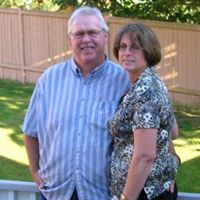Mark J Colby
age ~71
from San Jose, CA
- Also known as:
-
- Mark Joseph Colby
- Mark Michelle Colby
Mark Colby Phones & Addresses
- San Jose, CA
- 8333 Vintage Club Cir, Wilmington, NC 28411 • 9106861858
- 8333 Vintage Club Cir APT 12, Wilmington, NC 28411 • 9106861858
Us Patents
-
Method And System For Providing Remote Quality Assurance Audits
view source -
US Patent:20020161594, Oct 31, 2002
-
Filed:Apr 27, 2001
-
Appl. No.:09/842785
-
Inventors:Helen Bryan - Wilmington NC, US
Mark Colby - Wilmington NC, US
Ralph Reda - Wilmington NC, US
Daniel Waltermire - Painesville OH, US
William Williams - Wilmington NC, US -
International Classification:G06F017/60
-
US Classification:705/001000
-
Abstract:A system for auditing complex systems, such as nuclear power plants, is disclosed. The system stores all documents necessary for an audit. These documents are available for remote review by auditors via an Internet website. The website has one or more graphical maps of the system, its components and/or sub-systems that allows the auditor to select and access documents in the database(s).
-
Apparatus And Methods For Optimizing Reactor Core Coolant Flow Distributions
view source -
US Patent:20040096026, May 20, 2004
-
Filed:Nov 18, 2002
-
Appl. No.:10/065772
-
Inventors:Hwang Choe - Saratoga CA, US
Jose Casillas - Cupertino CA, US
Sig Wolf - Sunnyvale CA, US
Mark Colby - Wilmington NC, US -
International Classification:G21C019/28
G21C015/00 -
US Classification:376/373000
-
Abstract:A nuclear reactor core is provided that includes a plurality of fuel assemblies. In an exemplary embodiment, each fuel assembly includes a main coolant flow channel having an inlet. The plurality of fuel assemblies are arranged into at least three regions within the core. The flow channels are configured so that the flow of coolant through the main coolant flow channels of the fuel assemblies located in a particular region are substantially the same, and that the coolant flow through the fuel assemblies in each region is different from the coolant flow through the fuel assemblies in each other region.
-
Fuel Assembly Structure Selectively Using Channel And Coolant Rod For Load Support And Method
view source -
US Patent:57486956, May 5, 1998
-
Filed:Nov 7, 1995
-
Appl. No.:8/551769
-
Inventors:Thomas G. Dunlap - Wilmington NC
Robert B. Elkins - Wilmington NC
Mark J. Colby - Wilmington NC -
Assignee:General Electric Company - Schenectady NY
-
International Classification:G21C 3322
-
US Classification:376446
-
Abstract:A latch pin assembly is configured to enable selective engagement with at least one of the fuel assembly channel and the coolant rod such that the fuel assembly channel and the coolant rod can be selectively utilized to support the fuel assembly load, thereby eliminating the need for fuel tie rods. The latch pin assembly includes a latch pin selectively engageable with the fuel assembly channel and the coolant rod, and an anchoring assembly cooperating with the latch pin, wherein the anchoring assembly anchors the latch pin in a selected position such that the latch pin engages at least one of the fuel assembly channel and the coolant rod. The latch pin may be alternatively engageable with the fuel assembly channel and the coolant rod or simultaneously engageable with the fuel assembly channel and the coolant rod. With this arrangement, the bail handle can be used both to remove the entire assembly including the fuel assembly channel from the reactor vessel or to remove only the fuel bundle from the reactor vessel, leaving the fuel assembly channel in place.
-
Repositioned Fuel Assembly
view source -
US Patent:47675950, Aug 30, 1988
-
Filed:May 15, 1987
-
Appl. No.:7/049897
-
Inventors:Richard A. Wolters - San Jose CA
Mark J. Colby - San Jose CA
Robert B. Elkins - San Jose CA -
Assignee:General Electric Company - San Jose CA
-
International Classification:G21C 1500
G21C 700 -
US Classification:376353
-
Abstract:In a boiling water reactor (BWR) of the D-lattice type an improved apparatus and method for the mounting of a nuclear fuel assembly is disclosed. Specifically, a D-lattice nuclear fuel assembly is diagonally displaced at the top and diagonally displaced at the bottom to and toward the cruciform shaped control rod interstices. Displacement at the bottom end of the nuclear fuel assembly occurs by an eccentrically centered lower tie plate and fluid inlet for fitting to the core plate at the bottom end of the assembly. Displacement at the top end of the nuclear fuel assembly occurs by shims in the vicinity of the upper end of the channel at the top guides. The disclosed channel assembly is capable of installation during refueling cycles, with a displaced channel being substituted for prior art conventional D-lattice channels. Substitution of one displaced channel occurs with each refueling cycle in a group of four channels. Consequently, there results at the end a maximum of four refueling cycles, complete installation of the displaced channels.
-
Handle Unit For A Fuel Assembly In A Nuclear Reactor And Fuel Assembly Having Modified Channel
view source -
US Patent:58091017, Sep 15, 1998
-
Filed:May 29, 1996
-
Appl. No.:8/655875
-
Inventors:Thomas G. Dunlap - Wilmington NC
Gerald M. Latter - Wilmington NC
Mark J. Colby - Wilmington NC
Michael R. Stepp - Wilmington NC -
Assignee:General Electric Company - Schenectady NY
-
International Classification:G21C 332
-
US Classification:376446
-
Abstract:A fuel bundle assembly for a nuclear reactor includes a modified channel and a handle unit that improves pressure drop performance. With the modified channel, one approach is to vary the outside dimension of the fuel channel along the length of the channel, but maintain a constant channel wall thickness. Another approach is to maintain the external dimensions of the fuel channel and vary the wall thickness along the length of the channel. The handle unit is formed including a handle member and a separate rod support member releasably engageable with the handle member. The handle member includes channels for receiving latch pin assemblies, coolant rods and a spacer assembly. The rod support member includes a plurality of fuel rod support chambers providing lateral support for the fuel rods of the fuel assembly. The rod support member also includes a main chamber that is sized to receive a portion of the handle member in a friction fit. In addition to providing improved pressure drop performance, the arrangement eliminates the need to realign the fuel rods in an upper tie plate or an upper spacer when access to the fuel rods is necessary.
-
Handle Assembly And Channel For A Nuclear Reactor Fuel Bundle Assembly
view source -
US Patent:57871400, Jul 28, 1998
-
Filed:May 29, 1996
-
Appl. No.:8/654957
-
Inventors:Thomas G. Dunlap - Wilmington NC
Gerald M. Latter - Wilmington NC
Mark J. Colby - Wilmington NC
Michael R. Stepp - Wilmington NC -
Assignee:General Electric Company - Schenectady NY
-
International Classification:G21C 332
-
US Classification:376313
-
Abstract:A fuel bundle assembly for a nuclear reactor includes a modified channel that improves pressure drop performance and a handle assembly that includes structure for preventing a broken end plug from escaping the fuel bundle. In modifying the channel, one approach is to vary the outside dimension of the fuel channel along the length of the channel, but maintain a constant channel wall thickness. Another approach is to maintain the external dimensions of the fuel channel and vary the wall thickness along the length of the channel. The handle assembly replaces the conventional upper tie plate and is provided with structure for preventing debris such as a broken fuel rod end plug from escaping the fuel bundle. The structure preferably includes a plurality of gridwork cross members forming a substantially square grid including gridwork windows that are sized smaller than the fuel rod end plugs.
-
Two-Phase Pressure Drop Reduction Bwr Assembly Design
view source -
US Patent:50173324, May 21, 1991
-
Filed:Jul 3, 1989
-
Appl. No.:7/375646
-
Inventors:Gary E. Dix - Saratoga CA
Russell L. Crowther - Saratoga CA
Mark J. Colby - San Jose CA
Bruce Matzner - San Jose CA
Robert B. Elkins - San Jose CA -
Assignee:General Electric Company - San Jose CA
-
International Classification:G21C 1500
-
US Classification:376370
-
Abstract:In a boiling water reactor having discrete bundles of fuel rods confined within channel enclosed fuel assemblies, an improved fuel design of bundles of fuel rods interior of the channels is disclosed. Specifically, partial length rods are utilized which extend from the bottom of the channel only part way to the top of the channel. These partial length rods are shortened with respect to the remaining rods and are symmetrically distributed throughout the fuel bundle with the preferred disposition being in the second row of the bundle of fuel rods from the channel wall. The symmetrical distribution of the partial length rods is at spaced apart locations one from another. The partial length rods extend from the bottom of the fuel bundle and terminate within the boiling region. during shutdown of the reactor, an improved cold shutdown margin is produced at the top of the fuel assembly due to the improved moderator-to-fuel ratio and reduction in plutonium formation at the upper portion of the bundle. Shutdown control rod worth is improved due to greater moderator-to-fuel ratio and a longer thermal neutron diffusion length.
-
Two-Phase Pressure Drop Reduction Bwr Assembly Design
view source -
US Patent:51125706, May 12, 1992
-
Filed:Apr 4, 1988
-
Appl. No.:7/176975
-
Inventors:Gary E. Dix - Saratoga CA
Russell L. Crowther - Saratoga CA
Mark J. Colby - San Jose CA
Bruce Matzner - San Jose CA
Robert B. Elkins - San Jose CA -
Assignee:Hewlett-Packard Company
-
International Classification:G21C 1500
-
US Classification:376370
-
Abstract:In a boiling water reactor having discrete bundles of fuel rods confined within channel enclosed fuel assemblies, an improved fuel design of bundles of fuel rods interior of the channels is disclosed. Specifically, partial length rods are utilized which extend from the bottom of the channel only part way to the top of the channel. These partial length rods are symmetrically distributed throughout the fuel bundle with the preferred disposition being in the second row of the bundle of fuel rods from the channel wall. The symmetrical distribution of the partial length rods is at spaced apart locations one from another. During shutdown of the reactor, an improved cold shutdown margin is produced at the top of the fuel assembly due to the improved moderator-to-fuel ratio and reduction in plutonium formation at the upper portion of the bundle. Shutdown control rod worth is improved due to greater moderator-to-fuel ratio and a longer thermal neutron diffusion length. During power reactor operation, the partial length fuel rods improve flow distributions above the ends of the partial length rods by channeling steam in the open interstitial area between rods above the ends of the partial length rods.
Name / Title
Company / Classification
Phones & Addresses
Svp Field Operations And Service
ClearEdge Power
Renewables & Environment · Mfg Electrical Industrial Apparatus · Electrical Industrial Apparatus · Commercial Physical Research Mfg Semiconductors/Related Devices · Mfg Semiconductors/Related Devices · Computer Related Services, Nec, Nsk
Renewables & Environment · Mfg Electrical Industrial Apparatus · Electrical Industrial Apparatus · Commercial Physical Research Mfg Semiconductors/Related Devices · Mfg Semiconductors/Related Devices · Computer Related Services, Nec, Nsk
7175 NW Evergreen Pkwy BUILDING 100, Hillsboro, OR 97124
195 Governor's Hwy, South Windsor, CT 06074
195 Governors Hwy, South Windsor, CT 06074
920 Thompson Pl SUITE 100, Sunnyvale, CA 94085
8772573343, 5036939600
195 Governor's Hwy, South Windsor, CT 06074
195 Governors Hwy, South Windsor, CT 06074
920 Thompson Pl SUITE 100, Sunnyvale, CA 94085
8772573343, 5036939600
President
COLBY GROUP INTERNATIONAL, INC
Isbn (Books And Publications)

Resumes

Light Water Reactor Systems Design Consulting Engineer, New Plants Engineering
view sourceLocation:
Wilmington, NC
Industry:
Oil & Energy
Work:
Ge Apr 2010 - Sep 2014
Vice President, New Plants Engineering
Ge Power Apr 2010 - Sep 2014
Light Water Reactor Systems Design Consulting Engineer, New Plants Engineering
Ge Oct 2005 - Apr 2010
Vice President, Nuclear Analysis Center of Excellence
Ge Jul 2001 - Oct 2005
Team Leader, Reload Licensing Services
Vice President, New Plants Engineering
Ge Power Apr 2010 - Sep 2014
Light Water Reactor Systems Design Consulting Engineer, New Plants Engineering
Ge Oct 2005 - Apr 2010
Vice President, Nuclear Analysis Center of Excellence
Ge Jul 2001 - Oct 2005
Team Leader, Reload Licensing Services
Education:
University of Michigan 1972 - 1977
Master of Science, Masters, Bachelors, Bachelor of Science, Nuclear Engineering
Master of Science, Masters, Bachelors, Bachelor of Science, Nuclear Engineering
Skills:
Nuclear
Engineering
Engineering Management
Power Generation
Energy
Six Sigma
Power Plants
Project Management
Root Cause Analysis
Process Engineering
Nuclear Engineering
Process Improvement
Reactor
Procurement
Quality Assurance
Systems Engineering
Operational Excellence
Renewable Energy
Business Process Improvement
Engineering
Engineering Management
Power Generation
Energy
Six Sigma
Power Plants
Project Management
Root Cause Analysis
Process Engineering
Nuclear Engineering
Process Improvement
Reactor
Procurement
Quality Assurance
Systems Engineering
Operational Excellence
Renewable Energy
Business Process Improvement
Interests:
Children
Civil Rights and Social Action
Education
Environment
Poverty Alleviation
Science and Technology
Human Rights
Animal Welfare
Arts and Culture
Health
Civil Rights and Social Action
Education
Environment
Poverty Alleviation
Science and Technology
Human Rights
Animal Welfare
Arts and Culture
Health

Mark Colby
view source
Mark Colby
view source
Mark Colby
view source
Mark Colby
view sourceMedicine Doctors

Mark Colby
view sourceSpecialties:
Family Medicine
Work:
Mark S Souder MD
1310 E 7 St STE J, Auburn, IN 46706
2609250305 (phone), 2609256041 (fax)
1310 E 7 St STE J, Auburn, IN 46706
2609250305 (phone), 2609256041 (fax)
Languages:
English
Description:
Mr. Colby works in Auburn, IN and specializes in Family Medicine. Mr. Colby is affiliated with Dekalb Health.
Googleplus

Mark Colby
Work:
Ernst & Young LLP - Assurance (2009)
Education:
Texas A&M University - Finance, Texas A&M University - Accounting

Mark Colby
Tagline:
New Technology / Energy Executive

Mark Colby

Mark Colby

Mark Colby

Mark Colby

Mark Colby
Relationship:
In_a_relationship
Myspace

Mark Colby
view source
Mark Colby
view sourceYoutube
Classmates

Mark Colby
view sourceSchools:
Brewster High School Brewster MN 1972-1976
Community:
Jolene King, Elizabeth Evensen, Michael Dahlhoff, Marvin Mathias

Mark Colby
view sourceSchools:
Cherry Hill West High School Cherry Hill NJ 1975-1979
Community:
E Meeker, Debbi Langford

Mark Allan (Colby)
view sourceSchools:
Bethel Christian School Jefferson OH 1973-1977
Community:
Tracey Maynard

Mark Colby
view sourceSchools:
Hinckley High School Hinckley ME 1964-1968
Community:
Nate Kemler, Evelyn Kossick, Bob King, Peter Johnson

Mark Colby
view sourceSchools:
Gardiner Area High School Gardiner ME 1967-1971
Community:
Danny Cullen

Mark Colby
view sourceSchools:
Edgewood High School Ashtabula OH 1971-1975

Mark Colby, Cherry Creek ...
view source
Nasson College, Springval...
view sourceGraduates:
Mark Anderson (1972-1976),
Mark McLaughlin (1974-1978),
Mark Colby (1978-1982),
Peter Ketcham (1968-1974)
Mark McLaughlin (1974-1978),
Mark Colby (1978-1982),
Peter Ketcham (1968-1974)

Mark Colby
view source
Mark Colby
view source
Mark J Colby
view source
Colby Mark
view source
Mark Colby
view source
Mark Colby
view source
Mark Colby
view source
Andrew Mark Colby
view sourceGet Report for Mark J Colby from San Jose, CA, age ~71





